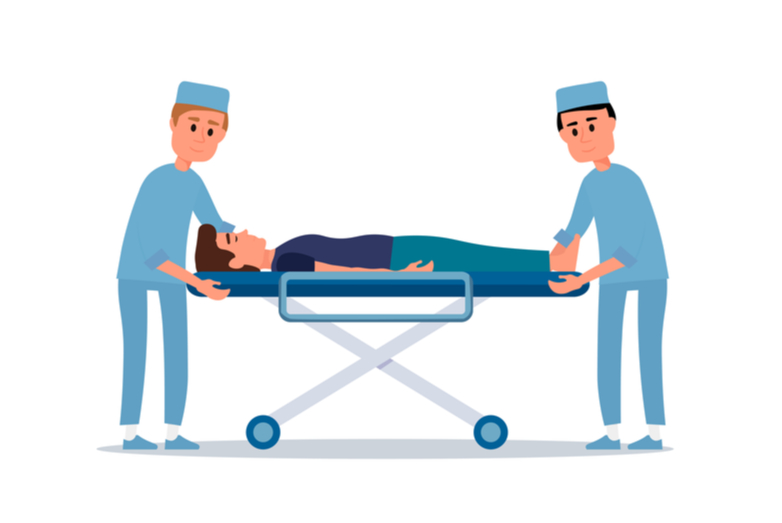Moving a patient from a bed to a stretcher must be carefully conducted to ensure the patient remains comfortable and uninjured throughout the process. It is never recommended to move a patient on your own, a team of two or more people is needed to keep the patient and transporters safe – you don’t want to pull out your back in the process.
When moving a patient from a bed to a stretcher, there should always be a leader, tasked with pulling the patient, and a helper who is tasked with holding the draw-sheet. The leader should be the strongest of the two people conducting the task. The holder must hold down the draw-sheet, careful not to pull or lift the sheet, but simply hold it in place. If three people are on the task, an additional person can assist by holding the patient’s head and neck through the transfer. If the patient is over 200 pounds, you will need additional assistance and possibly even a mechanical transfer device.
4 Steps to Safely Move a Patient from their Bed to a Stretcher
Step 1: Get Ready to Move the Patient
Before you move the patient, it’s important to get everything in place and ready to go. Start by lowering the head of the bed down and adjusting the bed height. In addition, make sure the bed wheels are locked in place.
Use a plastic slide board or garbage bag to slide under the sheet and draw-sheet, wedging it beneath the patient’s torso.
Shift the patient’s legs so that they are close to the edge of the bed.
Have the patient cross their arms over their chest, and then describe how you plan to move the patient so that they can work in unison with you and know what’s going on each step of the way.
Step 2: Slide Patient to Edge of Bed
Have the helper grab onto the draw-sheet on both sides of the bed.
Count to three, then lean back so that your weight shifts to your heels, at which point the leader can slide the patient towards the edge of the bed.
All the while, the helper continues to hold the sheet so that it does not slip out of place.
Step 3: Get the Stretcher Positioned and Ready
The helper will “cradle” the patient in the draw-sheet while the leader grabs the stretcher.
The goal is to have the bed slightly higher than the stretcher. When ready, position the stretcher beside the bed and lock the wheels in place.
Start by moving the patient’s legs onto the stretcher. By first moving the patient’s legs, you can decrease stress on your back considerably.
Step 4: Slide Patient onto the Stretcher
The helper can kneel on the bed while still holding fast to the draw sheet.
Grab onto the draw-sheet and count to three before sliding the patient onto the stretcher. You may need to do this a couple times before the patient is fully on the stretcher.
What is the difference between a gurney and a stretcher?
A stretcher is the original term used to define a bed-like device that can be used to transport patients from one location to another if they are bed-ridden, injured or unable to walk for any reason. The first stretchers were made of two bars and some fabric and were hoisted by two or more people situated on each end of the stretcher. Over time, more modernized stretchers were developed with wheels so that it was much easier to transport patients over pavement and other smooth surfaces.
A gurney is very similar, but it comes with legs that are capable of folding horizontally so that it’s much easier to lift a patient and place him or her on top of it. Essentially, a gurney is a collapsible stretcher.
At Stellar Transportation we use the latest equipment and tactics to safely transport patients from their bed to a stretcher and back again. You can rely on our trusted team of experienced transporters.
Contact us today to learn more, get a quote, or schedule a pick-up time. Interested about pricing? Check out our pricing page

